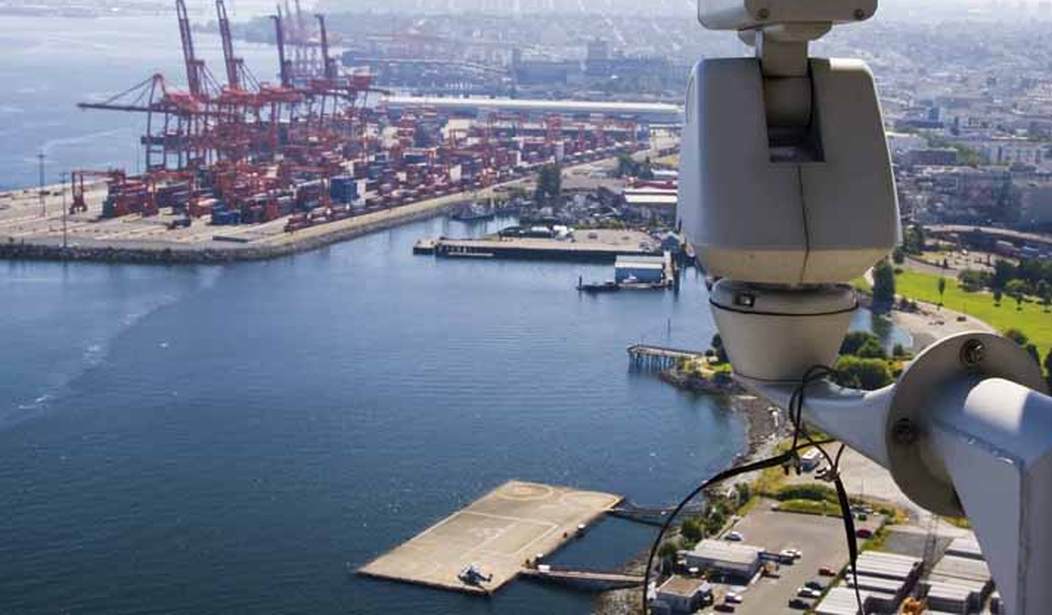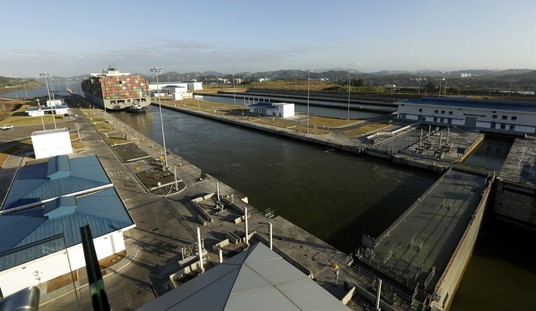WASHINGTON – Senators questioned the effectiveness of security enhancements at U.S. ports imposed by Congress in the wake of a naval base shooting that left one sailor dead in March.
Representatives from various agencies within the Department of Homeland Security (DHS) testified during a Senate Homeland Security and Government Affairs Committee hearing earlier this month that focused on how port security has improved since the Sept. 11, 2001, terrorist attacks.
Shortly after the September 11 attacks, Congress empowered the U.S. Coast Guard with new authorities to ensure commercial vessels and port facilities meet minimum-security standards. In 2006, Congress passed the Safe Port Act, which, among other things, mandated that DHS meet a requirement to scan 100 percent of U.S.-bound container cargo by 2012.
The department was given a two-year extension, which runs out in July. DHS has said it will not meet this deadline and is requesting another extension from Congress.
In November, several members of Congress wrote to TSA Administrator John Pistole calling for the timeline to be accelerated, noting the missed 2012 deadline.
Committee Chairman Tom Carper (D-Del.) said DHS Secretary Jeh Johnson wrote in a letter to Congress that the mandate was impractical and not the best use of taxpayer money.
“If that’s the case, we must look for a better way to address security risks while preserving the necessary speed of moving containers through our ports,” Carper said.
The committee also grilled the witnesses about the implementation of the Transportation Worker Identification Credential (TWIC) readers at ports.
The TSA has faced stiff criticism from members of Congress for its oversight of the TWIC program since the March shooting at a naval station in Norfolk, Virginia.
Jeffrey Savage, a truck driver, used his TWIC card to enter the Norfolk Naval Station in March and fatally shot Petty Officer Mark Mayo, who was providing security at the station. Savage was killed by Navy security forces.
Sen. Tom Coburn (R-Okla.) asked how secure the identification cards could be if Savage could slip through the TSA’s background check system.
“I’d just like your assessment on somebody with a TWIC card that gets into a port and shoots people,” Coburn asked. “How does that happen? No system’s perfect, and I’m not laying blame. I’m just saying, how did we miss that?”
TSA Assistant Administrator for Intelligence and Analysis Stephen Sadler said that Savage was cleared based on standards in place when he applied for his identification in December 2013.
Savage had two prior felony convictions, including one for voluntary manslaughter, the Associated Press reported.
“At the time that individual was vetted…the standard for manslaughter included all manslaughter, voluntary and involuntary. So when the individual came through, the crime had been committed in 2005, the conviction occurred in 2008,” Sadler said. “I believe he served about 800 days on his conviction. So he served about two and a half years. He was released from incarceration in 2011.”
“And based on the standards that we were using at the time, that voluntary manslaughter charge was not a disqualifier,” he continued.
Sadler noted that since the incident TSA has changed its policy in which a voluntary manslaughter charge will be an “interim disqualifier.” He said applicants can still appeal any decision if they are denied a credential.
The TSA began phase one of a pilot program last summer to test a new process in which applicants would make only one visit to an enrollment center to file their applications and then credentials would be sent in the mail. This would eliminate the need for a second trip to pick up the card.
Sen. Kelly Ayotte (R-N.H.) asked whether the mail-in program was making the process less secure by raising concerns about fraud.
Sadler said the TSA has taken steps to minimize fraud by implementing similar methods banks use to protect ATM pins.
Sadler said the mailing system represented a “tradeoff between security and convenience.”
“Definitely, it’s more convenient,” he said. “But you’re losing at least one of your steps in terms of internal controls of being able to verify the person’s identity by having them come in.”
Ayotte asked whether the TWIC is enhancing port security overall.
“Are we doing better?” she asked.
“Compared to nothing,” responded Stephen Caldwell, director of the Government Accountability Office’s homeland security and justice issues team. “You don’t have people getting the cards who have committed espionage against the U.S. or who have committed terrorism crimes, but that’s a pretty high bar.”
The program was originally aimed at preventing a dire national security incident, not comparatively lower-level offenses, he added.
Caldwell said it is unclear whether the TWIC has actually improved security at U.S. port facilities.
“There’s been an assertion that the TWIC has improved security and we’ve seen that in the latest report to Congress,” he said. “But we just haven’t seen strong evidence supporting it.”
Caldwell said, however, that having a credential that is unique and can be used in multiple places with background checks is “useful.”
Paul Thomas, the Coast Guard’s assistant commandant for prevention policy, said the TWIC program is part of a greater security system.
Thomas said port security has been steadily improving over the last decade, but challenges remain.
“As we get further from 9/11, I think the sense of urgency decreases, and so from the Congress on down. So, the security guard at a facility would have to make sure we maintain the sense of urgency with regard to port security, because the threat is adaptive, and as good as the physical security systems that we have in place are, there are emerging threats like cyber that we have not yet addressed,” he said.
Several lawmakers on the committee called for better metrics to measure the success of all the security programs.
“We’ve spent $2.9 billion on the Port Security Grant Program with no metrics to measure whether or not we have actually improved our security. We’ve spent $2.1 billion on cargo programs on a scanning mandate that we are told will never be met. So there’s $5 billion we’ve spent we have no assessment of what we’ve gotten for that money,” Coburn said.









Join the conversation as a VIP Member